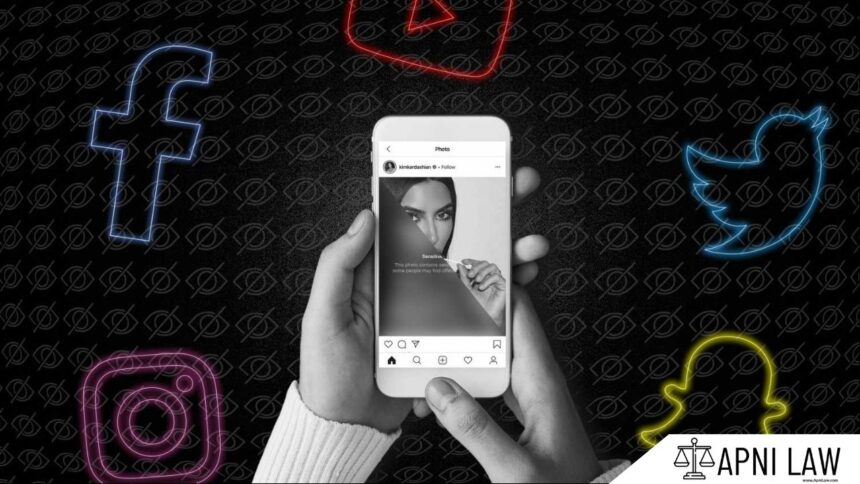What does Section 67 of the IT Act say?
The bare provision of Section 67 of the Information Technology Act, 2000 states:
“Whoever publishes or transmits or causes to be published or transmitted in the electronic form, any material which is lascivious or appeals to the prurient interest or if its effect is such as to tend to deprave and corrupt persons who are likely, having regard to all relevant circumstances, to read, see or hear the matter contained or embodied in it, shall be punished on first conviction with imprisonment of either description for a term which may extend to three years and with fine which may extend to five lakh rupees and in the event of a second or subsequent conviction with imprisonment of either description for a term which may extend to five years and also with fine which may extend to ten lakh rupees.”
This provision criminalises the electronic publication or transmission of obscene content. Since its enactment, courts have faced the challenge of applying it to a fast-changing digital environment. The following landmark cases illustrate how Indian courts have interpreted and refined this section.
Why is Section 67 significant in cyber law?
Section 67 is important because it directly targets obscene content in electronic form. In the early 2000s, India lacked clear laws on digital obscenity. This section became the central legal tool to control obscene online content, protect users from harmful exposure, and establish liability for publishers. Over the years, courts have had to decide who is responsible, how obscenity should be judged, and what counts as publishing in cyberspace.
What did the Avnish Bajaj case decide about intermediary liability?
The Avnish Bajaj v. State (NCT of Delhi) case in 2008 arose from the infamous DPS MMS scandal. A student uploaded an obscene MMS clip on Baazee.com, an online marketplace. The CEO, Avnish Bajaj, was prosecuted under Section 67.
The Delhi High Court examined whether an intermediary could be held liable for a user’s action. The court ruled that liability under Section 67 requires evidence of publication or transmission by the accused. In this case, the obscene video was exchanged directly between buyer and seller, outside Baazee.com’s platform. The listing on the website itself was not obscene.
The court recognised the difficulty of fixing criminal liability on intermediaries for user-generated content. It stressed that active involvement or facilitation is necessary. Later, the Supreme Court clarified that a director cannot be held criminally liable unless the company itself is prosecuted under Section 85 of the Act.
This judgment remains a milestone for defining the limits of intermediary liability and protecting online platforms from automatic criminal blame.
How did Sharat Babu Digumarti clarify the relationship between IPC and the IT Act?
In Sharat Babu Digumarti v. Government (NCT of Delhi) in 2017, the Supreme Court addressed whether a person acquitted under Section 67 could still face charges under IPC provisions on obscenity.
The Court ruled that the IT Act overrides the IPC when it comes to electronic content. Once a person has been prosecuted under Section 67 for an online act, they cannot be charged again under IPC obscenity sections for the same conduct.
This case highlighted the IT Act as a special law. It prevents double jeopardy and ensures that online obscenity is regulated only under the IT Act. The judgment reinforced legal certainty in cases involving electronic publications.
What principle did the Maqbool Fida Hussain case establish?
The Delhi High Court decided Maqbool Fida Hussain v. Raj Kumar Pandey in 2007. The case involved disputes over electronically published material alleged to be obscene.
The court made it clear that when the issue concerns digital content, the IT Act must prevail over the IPC. It ruled that a person cannot face proceedings under IPC provisions once they have been acquitted under the IT Act for the same material.
This case is significant because it recognised the IT Act as the exclusive law governing electronic obscenity. It prevented parallel prosecutions and gave certainty to the application of law in online cases.
What did the TVF Media Labs case say about online video content?
In TVF Media Labs Pvt. Ltd. & Ors v. State of NCT of Delhi & Anr (2023–2024), the creators of the popular web series College Romance faced charges under Sections 67 and 67A for alleged obscene content.
The Supreme Court analysed whether vulgar or abusive language in a web series qualifies as obscene. It relied on the modern community standards test instead of the outdated Hicklin test. The Court said that context, narrative, and audience must be considered when judging obscenity. Profanity alone does not make content obscene.
The Court also noted that the series was available on a subscription-based platform, meaning viewers accessed it voluntarily. Because the narrative context did not aim to deprave or corrupt, the Court quashed the charges.
This decision is a landmark for creative freedom online. It established that not all coarse or vulgar expressions can be penalised as obscene under Section 67.
How did the Allahabad High Court narrow liability in 2025?
In 2025, the Allahabad High Court ruled on whether merely “liking” an obscene post on social media counts as transmission under Section 67. The court held that liking a post is a passive action. It does not amount to publication or transmission.
This judgment narrowed liability under Section 67 to active conduct such as publishing, sharing, or uploading. Passive online behaviour, like liking or viewing, cannot attract criminal liability. This distinction is vital in protecting ordinary users from unjust prosecution for casual digital interactions.
What did the Madhya Pradesh High Court decide in 2023 about evidence?
In 2023, the Madhya Pradesh High Court acquitted an accused convicted under Section 67 due to lack of proof. The prosecution failed to show that any obscene content was actually published or transmitted electronically.
The Court stressed that concrete evidence is essential to prove liability under Section 67. Mere suspicion or allegation cannot justify conviction. This ruling reinforced the importance of strict evidentiary standards in digital cases.
What role did the Suhas Katti case play in shaping Section 67?
An earlier case, Suhas Katti v. State of Tamil Nadu (2004), was among the first convictions under Section 67. The accused posted obscene messages on a Yahoo message group, targeting a woman.
The court convicted him under Section 67 and accepted electronic records as valid evidence under Section 65B of the Evidence Act. This case set an early precedent for how electronic evidence can be used to secure convictions under the IT Act.
It showed that Section 67 could be applied effectively against online harassment and obscene messaging.
Why do these judgments matter for Section 67 in practice?
Together, these judgments create a coherent framework for applying Section 67. Courts have clarified that liability requires active involvement in publishing or transmitting obscene content. Passive actions like liking a post are excluded. Intermediaries are protected unless they actively facilitate transmission.
The IT Act overrides IPC for electronic obscenity, ensuring clarity and preventing double prosecution. Obscenity standards now rely on community perceptions, not rigid Victorian-era tests. Finally, prosecutors must provide solid electronic evidence before conviction can occur.
For any specific query call at +91 – 8569843472
Conclusion
Section 67 of the IT Act remains the cornerstone of India’s law on electronic obscenity. Courts have balanced protection of users with freedom of expression and the realities of online platforms. From Avnish Bajaj on intermediary liability to TVF Media Labs on modern obscenity standards, these cases define the boundaries of digital responsibility. The law now clearly punishes intentional publication of obscene material while safeguarding intermediaries, creators, and ordinary users from unfair liability.








